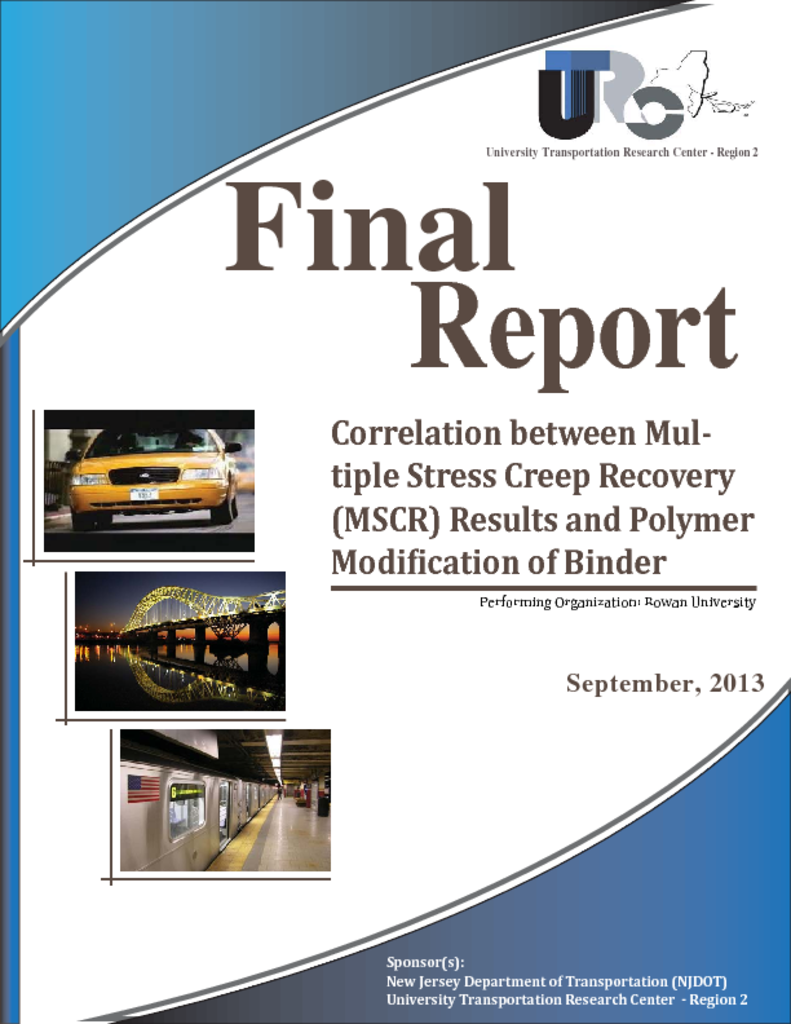Nationwide traffic loads are increasing, pushing conventional asphalt to its limit. In New Jersey matters are made worse by the heavy use of the Northeast Corridor. Polymer modification of asphalt, which can improve both low and high performance, is already available; however, in many cases traditional Superpave testing is not sensitive enough to quantify the impact of modification, dimensioning its use. Elastic Recovery and Forced Ductility, Superpave Performance Grade Plus tests, are sensitive to polymer modification but are time intensive and costly. These obstacles have lead the New Jersey Department of Transportation to require styrene-butadiene or styrene-butadiene-styrene to be incorporated in all modified binder to ensure performance, causing supply shortages and rising cost in the state. A relatively new test developed by the Federal Highway Administration, Multiple Stress Creep Compliance (MSCR) offers a simpler procedure using the Dynamic Shear Rheometer (DSR), thus it does not require the expense of purchase additional testing equipment. The objective of this study is to determine the feasibility of using MSCR as a specification for binder testing. Upon testing a variety of binders it has been determined that MSCR binder testing is sensitive to flow time results. Binders with non-recoverable compliance value (Jnr) of less than 0.5 kPa-1 appear to show better high temperature performance. The MSCR elastic curve requirement appears to be the most stringent of the requirements to evaluate elastic response as compared to elastic recovery at 25ºC and phase angle of 75º. An MSCR recovery at 3.2kPa greater than 40% will ensure that it is above the MSCR elastic recovery curve. This could serve as an alternative specification to the MSCR elastic recovery curve. The guidelines set forth by AASHTO MP 19-10, in which the binders are graded according to traffic (ESALs) by using Jnr is recommended. Additionally 1) The New Jersey DOT should use the access database system as a prescreening process for binder selection, alleviating extraneous binder testing and the cost associated with them. 2) New Jersey DOT could eliminate the use of elastic recovery, thus saving almost $15,000 dollars on capital cost of equipment and up to $500 per binder characterization considering labor and depreciation cost. These could lead to considerable savings of thousands of dollars over several years.; 3) Additional testing, including field performance should be conducted on binders with low Jnr (less than 0.5 kPa-1) and with a lower PG-grade, such as PG 64-28 versus PG64-22. and 4) This can be addressed by closely looking at the ODSR result of binders. For example, at 64°C, if the G*/sin( ) is below 2.0 kPa, it is unlikely to pass a higher grade and withstand heavy traffic., and 5) Low non-recoverable creep compliance (Jnr < 0.5 kPa-1) coupled with high MSCR recovery at 3.2 kPa (recovery greater than 40%) and G*/sin( ) high enougho t pass the next high grade will ensure that the binder selected will withstand heavy and extreme traffic levels.


